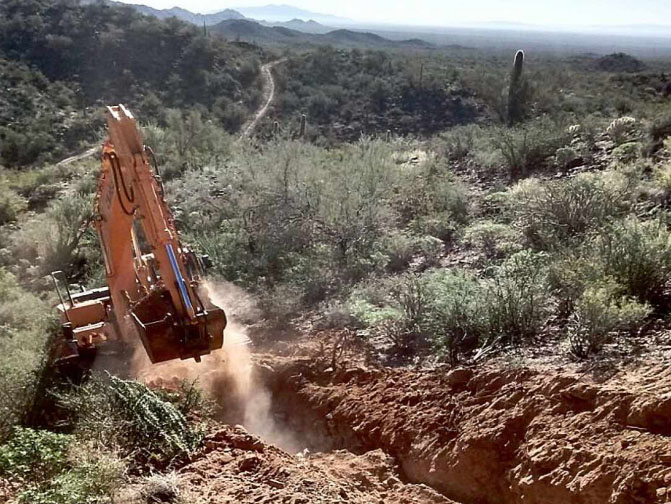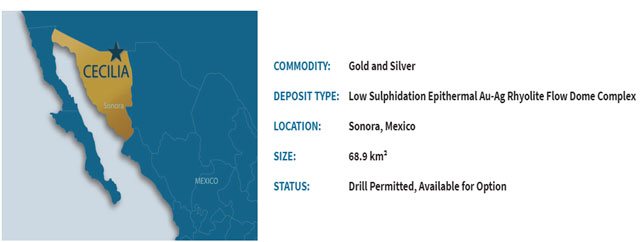
In this action packed interview, Bob Moriarty the founder of 321gold and 321energy.com sits down with Maurice Jackson of Proven and Probable to discuss current events, companies that have your attention, and to discuss Amazon’s best-selling book right now, under Commodities Trading, which happens to be your book aptly entitled: “Basic Investing In Resource Stocks, the Idiot’s Guide”.
VIDEO
AUDIO
https://soundcloud.com/proven-and-probable/bob-feb-2019
TRANSCRIPT
Original Source: https://www.streetwisereports.com/article/2019/03/03/bob-moriarty-on-geopolitics-resource-companies-and-his-new-book.html
Bob Moriarty on Geopolitics, Resource Companies and His New Book
Contributed Opinion
Source: Maurice Jackson for Streetwise Reports (3/3/19)

 Bob Moriarty of 321 Gold sits down with Maurice Jackson of Proven and Probable and sounds off about the state of the world, resource companies he is paying attention to, and what readers will find in his new book.
Bob Moriarty of 321 Gold sits down with Maurice Jackson of Proven and Probable and sounds off about the state of the world, resource companies he is paying attention to, and what readers will find in his new book.

We brought you on today to discuss current events, companies that have your attention and to discuss Amazon’s best-selling book right now under commodities trading, which happens to be your book aptly entitled “Basic Investing in Resource Stocks: The Idiot’s Guide.” Bob, you shared with me on a number of occasions to be aware of political and geopolitical events as they have a direct influence on our lives and portfolio. Let’s begin with current events and there’s a number of them unfolding right before us. Beginning in the U.S., what has your attention and why?
Bob Moriarty: I don’t know a good term to use, but it’s almost a feeling of a sick desire to watch something obscene, the Cohen hearings are certainly interesting. It’s a measure of how far over the cliff the country has gone. It’s obscene. Why you would get a guy who is a felon and who’s lied to Congress, who has an agenda to testify in Congress is just amazing! We know the guy is a liar. It’s all political theater. Sadly, neither party, no one is trying to improve the country. They’re just trying to get even with the guys on the other side of the aisle. It’s sick okay, but it’s interesting to watch because it’s so sick.
Maurice Jackson: In previous interviews you referenced the Deep State/Shadow Government. For someone new to the conversation, who is the Deep State and what is their significance?
Bob Moriarty: I’m not sure that deep state is a good term. It’s really the Congressional Military Industrial Complex that President Eisenhower warned us about in 1961 in his farewell address. In his written copy, President Eisenhower called it the Congressional Military Industrial Complex. His political advisor said, “You can’t do that. You can’t criticize Congress, so remove that. Just call it the Military Industrial Complex.”
There exists within the United States a small subset whose economic welfare is based on constant war. We no longer fight wars to achieve peace. We fight wars to achieve war and it’s a transfer of wealth from the taxpayers, the United States to the Congressional Military Industrial Complex. Wars will destroy, actually it has destroyed the United States already.
The United States is bankrupt, it’s functionally bankrupt. There is nothing we can do about it. There is no savior that’s going to come along. There are no solutions, we’re bankrupt. The standard of living of most Americans is going to decline a lot more than it already has.
Maurice Jackson: Just for the record, is it the Military Industrial Complex or the Democratic Party, which one is it that really wants President Trump out and why?
Bob Moriarty: Both the Deep State and the Democrats, but only because they wanted Hillary Clinton in. She was supported by the Deep State. A couple of months ago I was writing and talking about there being a coup d’etat in the United States. Then Andrew McCabe came actually went on 60 Minutes and he admitted it. I mean this is bizarre. If you have a coup d’etat in any country in the world, the legal system should arrest these guys, give them fair trials and shoot them. We don’t do that. We admit, “Oh yeah, we attempted a coup d’etat, the Department of Justice and the NSA and the CIA and the FBI were all trying to overthrow the democratically elected president of the United States,” but who cares?
Maurice Jackson: Bob, I want to go back to my previous question, what will be the purpose or what is the ultimate intent? If they get President Trump out, then what?
Bob Moriarty: Well, see, that’s the problem. We talk about defeating the ISIS in Syria or we talk about regime change in Iran or regime change in Syria or regime change in Afghanistan or regime change in Iraq. We never have a plan B. We never have anything that we actually intend to do. The journey has become the destination and that is perpetual war.
Maurice Jackson: Let me ask you this here, what is Bob Moriarty’s assessment of President Trump?
Bob Moriarty: I think the man’s an idiot. You want to beat around the bush, he’s a blithering idiot. He’s a narcissist. He’s knowledge of things economic or historical are absolutely obscene. He’s most certainly a criminal, but when you say that you also have to say, well, his opponent was Hillary Clinton. If she had been elected president, there would have been four versions of air force one, three of them just to carry her baggage around.
Maurice Jackson: Therefore, in some regards the United States would have the same president in Trump or Clinton. Let’s expand the narrative to geopolitics here. Things are really heating up between India and Pakistan. What’s going on there?
Bob Moriarty: Let me back track a little bit. I think we’ve discussed the worldwide revolution before, but the population of every country on earth is upset because the power and the money is being transmitted from the 99% to the 1%. Everybody is upset, the Yellow Vest and Israel and Canada and Brussels and Spain and I’m certain that’s true in Pakistan as well. There is an area of disputed territory between Pakistan and India that’s been in dispute since 1948. There are people, there are terrorists, India calls them terrorists, but they’re supported by Pakistan who set off a bomb and killed 40 Indian policemen, military. India was naturally upset.
When you’re dealing with two parties who are equipped with nuclear weapons, you want to avoid that kind of stuff. Because one of the options is everybody keeps being stupid and you end up lobbying nuclear weapons at each other. I’m not going to say I’m predicting it, I don’t know what the possibility is. I know it’s a very dangerous time and I wish there was a way of sorting it out that made sense. Unfortunately, I mean the only sane political leader in the world today I think is Putin.
Maurice Jackson: Speaking of Putin, I want to address the situation with Russian, Ukraine as well. Before we do that, let’s move west and go and discuss the situation between the U.S. and Iran, what’s going on there?
Bob Moriarty: Well, here’s what’s funny. Israel has been advocating for a war against Iran since 1982. It’s in writing. They’ve said it many, many times. It has nothing to do with Iran and everything to do with Israel. Israel has convinced the United States to fight their wars for them. There is no Iranian nuclear weapons program period. It stopped years ago, all 17 U.S. intelligence agencies admitted and there is no nuclear weapons program period, end of story. Everything that has been said about Iran is something that has been made up by Benjamin Netanyahu and the Mossad. They’re trying to convince the Americans to go to war.
Now since Donald Trump was bought and paid for by Sheldon Adelson, he sold his soul for about $30 or $35 million in the presidential campaign. Benjamin Netanyahu through Sheldon Adelson literally tells the President of the United States what to do. I’m naturally against that, however, if Hillary Clinton had been elected she would have done the same thing. We need to stop fighting wars for Israel. I am not a pacifist. I am the opposite of a pacifist. I am a warrior and I fought in war and I know all about war because I’ve been there. I would defend my country and my family and my state in a minute against a true enemy.
We go out and create the straw enemies who are not the enemies of us on behalf of Israel. Then we attack them and we let a bunch of our kids get killed. We pay for the war and it’s bankrupted the United States. The United States can end up just like French empire, the Spanish empire, the Russian empire, the British empire, it’s going to bankrupt itself. The standard of living of Americans are going to go down substantially, fighting wars for a tiny meaningless country in the Middle East.
Maurice Jackson: You know what you say sometimes I know that others may disagree with you and say, “That’s a little extreme,” but the reality is, you’ve stated empirical evidence. Wars bankrupt nations and then they also devalue their currency and history does repeat itself. The United States currently is on that trajectory. Let’s move north here. You referenced Russia earlier, there isn’t that much news coming out from Russia and Ukraine. What’s the situation like there?
Bob Moriarty: Well, actually there is and again that’s a situation where the neocons who are under the control of Benjamin Netanyahu. I mean they’re traitors to the United States, but they would like to get into war with Russia and they’re using the Ukraine. It’s really funny because the Ukrainian government is supported by the United States, Poroshenko, they’re just as corrupted as they could be. It’s the worst possible thing in the world for the Ukrainian people, but we don’t give a shit, okay, as long as they do what the United States wants to do, which is to antagonize Russia.
Now everybody talks about Russia having invaded Crimea, but the Crimea was always part of Russian, been part of Russian since I think Catherine the Great. The Crimea only became part of Ukraine in 1954, because Khrushchev got drunk and he signed it over to the Ukrainians. Ukraine was part of the USSR back then, so it didn’t really change anything whatsoever. When the United States sponsored and paid for and admittedly paid $5 billion of American dollars to subvert the Ukrainian government and sponsored the coup d’etat in Ukraine against their democratically elected president. Then the thugs that are running Ukraine started stirring up trouble that was anti-Russian. The people in the eastern part of the country voted and said, “We don’t want to be part of Ukraine, we’re Russian. We’ve always been Russian and we want to be Russian.” Ukraine is kind of split in two.
Ukrainian Navy tried to force a ship through a very narrow straight and the Russians captured the ship and said, “No, you can’t do that. That’s illegal to do.” It’s a hot spot and it’s something that could go nuclear in very short order. We have a small group about 30 people who are at the heart of military industrial complex. They’re neocons, they’re dual nationals. They do not owe any loyalty whatsoever to the United States, but all of it to Israel who want to sponsor war between the United States and Russia. If we do, if we allow them to do that, it’s a war that’s going to last for about 30 minutes.
Maurice Jackson: Well, certainly it’s a war that we don’t want. I recall, Bob, you’ve referenced before in previous interviews it’s a fact that maybe most people aren’t aware of. You referenced that the United States does not engage in war with countries that have nuclear weapons. I’m I correct in my memory on that?
Bob Moriarty: Well, by and large we choose to attack countries that cannot defend themselves. Pakistan was good and Afghanistan was good and Iraq was good and Syria was good and Iran’s good. Why they’re antagonizing Russia, which most certainly is nuclear armed, I don’t know.
Maurice Jackson: Switching gears, let’s move onto companies that have your attention at the moment.
Bob Moriarty: Well, there’s my favorite trio and Quinton Hennigh is behind all three of them in Novo Resources Corp. (NVO:TSX.V; NSRPF:OTCQX), which we have talked about at some length. It’s very hot in Australia right now and summer starts cooling down in March and April and they’ll get busy. Novo is doing some stuff now, but nothing of significance that will move the market. They will be testing at Egina probably starting in April and I expect some very significant results there.
But of more interest is Miramont Resources Corp. (MONT:CSE) that I think they’ve completed six holes so far in southern Peru. They’ve got a very interesting deposit with three big targets that could be a world-class project. I’m not sure the first results they’re going to show out of the box, blow the lead off the stock kind of assays. It’s a drill program that I expect to be of major importance. I expect drill results coming out in two to four weeks, and they’re certainly going to be very interesting and it’s the stocks that I own a lot of and I’d like a lot. It’s got about $30 million market cap. Now Novo has about $400 million market cap, so Miramont’s can move a lot more than Novo in terms of percentage.
Second, you and I went to Irving Resources Inc. (IRV:CSE; IRVRF:OTCBB) a year and a half ago, almost two years ago now. They should and should be in great big quotation marks, should start drilling about mid-March and probably six weeks to two months after that start coming out with the results. They’re testing two things. They’re going to test the area that we saw that had very high grade gold right at the surface in a vein system. Just for your information Keith Barron went over there. The samples that we took tested about $25,000 a ton. Keith Barron took a sample that tested $35,000 a ton. That’s not going to be the first drill target. The first drill target’s going to be in the sinter. The sinter has shown some several grams to the ton assays from the coats of silica cap that makes it the sinter. That sinter is steep because that’s typically not where the gold is found. The gold is trapped underneath the sinter and they’re going to drill into that. I can’t tell you whether Irving will hit on the first hole or its 50th hole, but I expect some real barn burning results there.
Maurice Jackson: It’s truly interesting times for Dr Quinton Hennigh there. How about switching to the Metallic Group of Companies. What can you tell us about them?
Bob Moriarty: Well, the first company that I wrote up going back 18 years ago is NovaGold. The guy that I was working with was Greg Johnson, he was the Vice President of Exploration. Very intelligent guy, very good guy. I like him a lot. What he’s done he’s put together three companies in different commodities. He’s got a company that specializes in copper and it’s called Granite Creek Copper Ltd. (GCX.V:TSXV). He’s got a company called Group Ten Metals Inc. (PGE:TSX.V; PGEZF:OTC) that has a platinum, palladium deposit in Montana right next to the Stillwater mine. It appears from a technical point of view, it appears that they’ve got a carbon copy of the Stillwater Mine.
Greg has done a brilliant job of putting packages together that nobody else has ever put together before. Everybody knew there were some good projects at Stillwater that weren’t owned by Stillwater. One guy owned one and another guy owned another. Another company owned the other and what Greg’s managed to do is put that together. Then there’s Metallic Minerals Corp. (MMG:TSX.V) that specializes in silver up in the Yukon. The interesting thing is, it’s all under similar managements. I like him a lot. These are all very quiet companies. Nobody’s heard about them. Nobody pays any attention to them, but I think that all three of them will end up being home runs. I like Greg Johnson a lot, he’s a good guy.
Maurice Jackson: Full disclosure, all the companies that you’ve referenced so far are sponsors of Proven and Probable with the exception of Granite Creek Copper. There’s one more company that recently you’ve been discussing and that is Rover Metals. What can you share with us?
Bob Moriarty: Well, Rover Metals Corp. (ROVR:TSX.V; ROVMF:OTCQB) is interesting. Rover has got the market cap about $3 million and they’ve got just under a million dollars in the bank. They can get started. In a roaring ball market it is not the majors or the mid tiers that have the greatest percentage advance, it’s the little tiny companies that have the major upside. Rover is north of the Yellowknife okay up in the Northwest Territory. I think they’re 110 kilometers north of the Yellowknife.
Most people won’t even recognize this, but I think it’s the biggest gold mine in Canada was the giant mines in Yellowknife. It was a big deal 30 or 40 years ago, but you don’t hear much about that district now. He’s put together a good package. They’re getting a lot of interesting results. He’s got enough money to get started on the drill program and it’s the company that can go from the $3 million market cap to a $30 million market cap with one set of good drill holes.
Maurice Jackson: The CEO there is Judson Culter. Just for our audience, we will be interviewing Group Ten Metal’s tomorrow as well as Rover Metals. Then Metallic Minerals as well next week and we plan to have Granite Creek Copper as well. We just interviewed Novo Resources and we’re trying to get Miramont and Irving back on the program as well here in the future. Finally, Bob, you just released a new book entitled ‘Basic Investing in Resource Stocks: The Idiot’s Guide.’ Allow me to be the first to congratulate you in less than 10 days your book is the best-selling book on Commodities Trading on Amazon. That’s quite an accomplishment.
Bob Moriarty: Well, yeah, but you’re the guy who kept bugging me to write the damn thing. It’s all your fault, it’s not my fault.
Maurice Jackson: I’m delighted and honored that you wrote the book and I know everyone that will be wise enough to purchase a copy will feel the same. Bob, tell us about your book, and why should someone reading purchase a copy?
Bob Moriarty: Well, here’s what’s interesting, if you’ve never written a book or a long article, you don’t realize that once you start writing, it takes a life of its own. I fully intended to cover copper and uranium and zinc and silver and gold and platinum and palladium. What I intended to do turned out to be something totally different than what I actually ended up with. I started writing and whatever it is that controls my typing fingers said, “No, you don’t want to go in this direction. You want to go in this direction,” so I did that. What I did is I put in a lot of things that I’ve learned over the years that they’re very important.
I mean, let me give you a perfect example. There are so many people who are invested in gold and silver and resource stocks, who spend a lot of time worrying about manipulations. The funny thing is the whole manipulation thing is just as big as scam as “Bitcon” and Global Warming. We talked about Bitcon when it was $800 billion and it’s $150 billion now. That was a great financial fraud world test. Global warming and carbon credits is an absolute fraud. It’s a tax. There is no such thing as global warming. The real danger is global cooling and it has far more to do with the sun than it has to do with the actions of man.
To a much smaller degree, the idea of manipulation being significant, it’s similar. It’s fraud and the people who talk about it know that they’re using fraud. However, it’s very appealing. When you go out and buy a company or when you go out and buy a commodity and it goes down, you can always point at manipulation and say, “It’s manipulated. I didn’t lose money because I’m stupid and made bad decisions. I lost money because it’s manipulated.” The guys who talk about manipulation and use manipulation as an excuse don’t bother telling everybody every financial instrument is manipulated. It is manipulated by everybody all of the time. Now if you think that manipulation is significant, you should not invest. It’s that simple, but everything’s manipulated.
We know the government manipulates the interest rates. We know they manipulate currencies, good chance they manipulate stock market. Who gives a shit? It’s like the sun coming up, you can’t do anything about it. Why worry about it? I put in a bunch of tips that I’ve learned over the years from mistakes that I’ve made and I’m really quite proud of the book. I think it’s a good book and I think that people will save themselves a lot of money by buying and reading the book.
What I try to do is I try to make books very simple. I’m not interested in a 400 or 500 page turner or I’m trying to espouse some really unique theory of investing. I don’t give a shit. I want to help ordinary people make decisions that can make them money. Now, I think you and I have talked a couple of times about the Daily Sentiment Indicator. I have used that to predict turns in 24 commodities. I did it in January of 2018 and then I did it in the end of December 2018. Only 24 commodities that I predicted would turn direction, 24 of them did it. The funny thing is I’m not a guru. Anybody could do that, if they would read the book, if they would understand the basics. If they use the tools that are available to everybody. Anybody could do that. There’s no magic to it. Everybody wants to convince people there’s some kind of magic. You need to listen to the experts, you need to listen to the gurus. Well, the experts are all full of shit. Why would you want to listen to them?
Maurice Jackson: Your book resonates with so many people, hence the success it’s had already. When one reads this book, you have the ability to tap into one of the deepest reservoirs of intellectual capacity in this sector that has a proven pedigree of success. Bob is sharing with you the tools he uses, and they’re very practical. Anyone as you referenced could use the tools.
When I first read the book, it wasn’t what I expected. Not in a disappointing way, I thought you were going to go into a more technical side but instead it’s a very pragmatic book. It’s very easy to understand and apply. Bob, on behalf of Proven and Probable, we want to thank you for giving us the seal of approval as one of the trusted sources that you recommend for readers. That is by far the highest compliment to our work and I want to thank you for that sir.
Bob Moriarty: Well, I don’t know whether you should thank me. If people hate the book, I’m going to blame you.
Maurice Jackson: We’ll take the blame on that one. Let me ask you this as well, what type of feedback have you received from your peers in the industry?
Bob Moriarty: Very positive. When you’re a writer you never really know how people are going to react to it. I mean face it, there’s a lot of books that are worth reading. When you do something and you have invested a lot of time and energy and thought into something, you want people to react to it in a positive way. I’ve talked to a lot of people and I’ve had a lot of people do reviews so far and there will be a lot more reviews. Everybody is receiving it very well. I think these guys are not trying to suck up to me. If they saw a problem with it, they’d say something.
Maurice Jackson: Bob, give us a title one more time and share with us where we can purchase a copy.
Bob Moriarty: Okay, you can go to Amazon.com and buy it there in any country they sell books. It’s “Basic Investing in Resource Stocks: The Idiot’s Guide.” I want everybody to understand it’s not the reader that’s the idiot, it’s me.
Maurice Jackson: Bob, before we close, last question. What did I forget to ask?
Bob Moriarty: Probably dozens and dozens of things. You just lack the ability to ask any interesting questions. Once you got past, “How are you doing on your book?” you just ran out of interesting things to say.
Barbara Moriarty: He forgot to ask about the new investment.
Bob Moriarty: Oh, which new investment?
Maurice Jackson: Well, please share with us.
Barbara Moriarty: Sheep. I bought two of the Swiss Valley black Nosed Sheep. They are a special breed. They are very rare and they are absolutely gorgeous. They are living in five star luxury in the new forest in England and they are two males, but they sort of didn’t go full, did they really?
Bob Moriarty: Yeah. Let me be nice about this. They used to be males.
Barbara Moriarty: They have them fixed, but they’re not like normal sheep. They are like lovely cuddly teddy bears.
Maurice Jackson: Pleasure speaking with you, ma’am.
Barbara Moriarty: I will send you a photo.

http://www.valaisblacknose.org/
Maurice Jackson: Bob, for someone that wants to get more information on your work, please share the websites.
Bob Moriarty: I’ve got two websites, 321energy and 321gold, and they’re free websites and we’ve got about 50,000 people a day coming to them. We think they’re valuable.
Maurice Jackson: Last but not least, please visit provenandprobable.com for Mining Insights and Bullion Sales. You may reach us at contact@provenandprobable.com.
Bob Moriarty of 321gold and 321energy.com, thank you for joining us today on Proven and Probable.
Bob and Barb Moriarty brought 321gold.com to the Internet almost 16 years ago. They later added 321energy.com to cover oil, natural gas, gasoline, coal, solar, wind and nuclear energy. Both sites feature articles, editorial opinions, pricing figures and updates on current events affecting both sectors. Previously, Moriarty was a Marine F-4B and O-1 pilot with more than 832 missions in Vietnam. He holds 14 international aviation records.
Maurice Jackson is the founder of Proven and Probable, a site that aims to enrich its subscribers through education in precious metals and junior mining companies that will enrich the world.
1) Bob Moriarty: I, or members of my immediate household or family, own shares of the following companies mentioned in this article: Miramont Resources, Irving Resources, Novo Resources, Granite Creek Copper, Group Ten Metals and Metallic Minerals. I personally am, or members of my immediate household or family are, paid by the following companies mentioned in this article: None. My company has a financial relationship with the following companies mentioned in this article: Miramont Resources, Irving Resources, Novo Resources, Granite Creek Copper, Group Ten Metals and Metallic Minerals are sponsors of 321 Gold and/or 321 Energy.
2) Maurice Jackson: I, or members of my immediate household or family, own shares of the following companies mentioned in this article: Miramont Resources, Irving Resources, Novo Resources, Granite Creek Copper, Group Ten Metals and Metallic Minerals. I personally am, or members of my immediate household or family are, paid by the following companies mentioned in this article: None. My company has a financial relationship with the following companies mentioned in this article: Miramont Resources, Irving Resources, Novo Resources, Granite Creek Copper, Group Ten Metals and Metallic Minerals are sponsors of Proven and Probable. Proven and Probable disclosures are listed below.
3) The following companies mentioned in this article are billboard sponsors of Streetwise Reports: None. Click herefor important disclosures about sponsor fees.
4) Statements and opinions expressed are the opinions of the author and not of Streetwise Reports or its officers. The author is wholly responsible for the validity of the statements. The author was not paid by Streetwise Reports for this article. Streetwise Reports was not paid by the author to publish or syndicate this article. The information provided above is for informational purposes only and is not a recommendation to buy or sell any security. Streetwise Reports requires contributing authors to disclose any shareholdings in, or economic relationships with, companies that they write about. Streetwise Reports relies upon the authors to accurately provide this information and Streetwise Reports has no means of verifying its accuracy.
5) This article does not constitute investment advice. Each reader is encouraged to consult with his or her individual financial professional and any action a reader takes as a result of information presented here is his or her own responsibility. By opening this page, each reader accepts and agrees to Streetwise Reports’ terms of use and full legal disclaimer. This article is not a solicitation for investment. Streetwise Reports does not render general or specific investment advice and the information on Streetwise Reports should not be considered a recommendation to buy or sell any security. Streetwise Reports does not endorse or recommend the business, products, services or securities of any company mentioned on Streetwise Reports.
6) From time to time, Streetwise Reports LLC and its directors, officers, employees or members of their families, as well as persons interviewed for articles and interviews on the site, may have a long or short position in securities mentioned. Directors, officers, employees or members of their immediate families are prohibited from making purchases and/or sales of those securities in the open market or otherwise from the time of the interview or the decision to write an article until three business days after the publication of the interview or article. The foregoing prohibition does not apply to articles that in substance only restate previously published company releases. As of the date of this article, officers and/or employees of Streetwise Reports LLC (including members of their household) own securities of Granite Creek Copper, Group Ten Metals and Metallic Minerals, companies mentioned in this article.
Proven and Probable LLC receives financial compensation from its sponsors. The compensation is used is to fund both sponsor-specific activities and general report activities, website, and general and administrative costs. Sponsor-specific activities may include aggregating content and publishing that content on the Proven and Probable website, creating and maintaining company landing pages, interviewing key management, posting a banner/billboard, and/or issuing press releases. The fees also cover the costs for Proven and Probable to publish sector-specific information on our site, and also to create content by interviewing experts in the sector. Monthly sponsorship fees range from $1,000 to $4,000 per month. Proven and Probable LLC does accept stock for payment of sponsorship fees. Sponsor pages may be considered advertising for the purposes of 18 U.S.C. 1734.
The Information presented in Proven and Probable is provided for educational and informational purposes only, without any express or implied warranty of any kind, including warranties of accuracy, completeness, or fitness for any particular purpose. The Information contained in or provided from or through this forum is not intended to be and does not constitute financial advice, investment advice, trading advice or any other advice. The Information on this forum and provided from or through this forum is general in nature and is not specific to you the User or anyone else. You should not make any decision, financial, investments, trading or otherwise, based on any of the information presented on this forum without undertaking independent due diligence and consultation with a professional broker or competent financial advisor. You understand that you are using any and all Information available on or through this forum at your own risk.







































